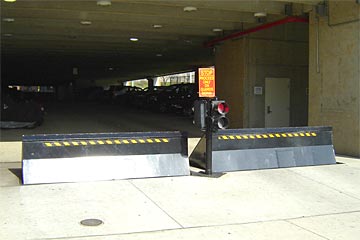The 6-Minute Rule for Wedge Barriers
Table of ContentsGetting The Wedge Barriers To WorkAll About Wedge Barriers

Some Ideas on Wedge Barriers You Should Know
g., springtime support 65 )might be fixed to completion of the springtime rod 58 to make it possible for compression of the springs 60. As the springs 60 are pressed between the springtime supports 62, the spring setting up 54 generates a force acting upon the webcam paired to the spring rod 58 in an instructions 66. The staying pressure applied to
the cam to deploy the wedge plate 16 may be provided by an electromechanical actuator 84 or other actuator. Because of this, the spring setting up 54 and the actuator 84(e. g., electromechanical actuator)might run with each other to convert the webcam and lift the see this hereMore Bonuses wedge plate 16.
As pointed out over, in the deployed position, the wedge plate 16 serves to obstruct access or travel beyond the obstacle 10. The barrier 10(e. g., the wedge plate 16 )may block pedestrians or vehicles from accessing a home or path. If a vehicle is traveling in the direction of the released wedge plate 16(e. For instance, in one condition, click now the safety legs 86 may be prolonged duringmaintenance of the barrier 10.